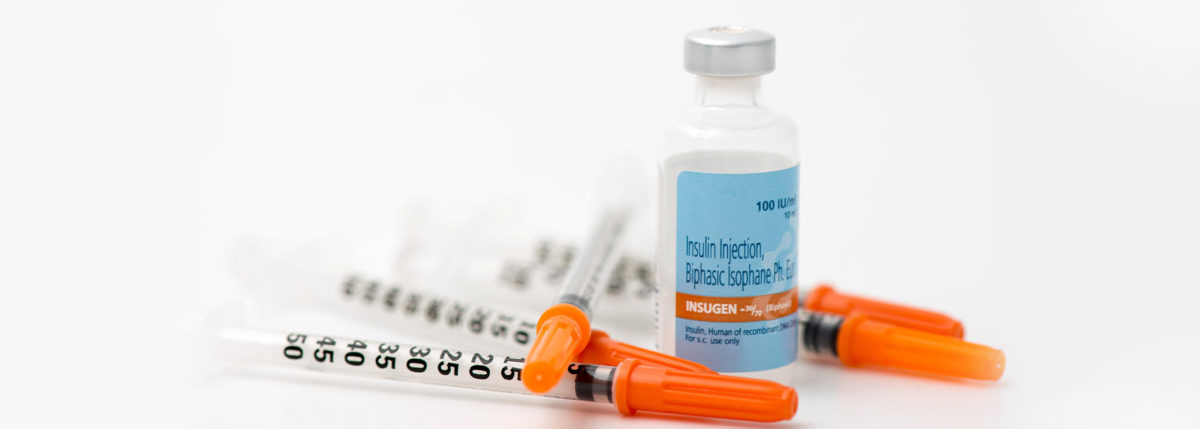The Honeymoon Phase in Diabetes
You’ve heard the phrase “honeymooning,” but what does it actually mean? Is a type 1 honeymoon “good” or “bad”? Is it all it’s cracked up to be? We answer these questions and more in our guide!
What is a honeymoon?
Type 1 diabetes is an autoimmune condition in which beta cells in the pancreas are destroyed by the body’s own white blood cells, leaving the pancreas with little or no ability to produce insulin. Without insulin, which is produced by the beta cells, the body can’t regulate its blood sugar levels, leading to hyperglycemia and complications further down the road.
Sometimes, a few remaining beta cells continue producing insulin often just for a temporary (or honeymoon) phase shortly after a type 1 diabetes diagnosis. This means less insulin is needed via injection or pump. The honeymoon phenomenon can be unpredictable, with insulin production varying in quantity and duration—and it doesn’t necessarily happen to every person with type 1.
Am I cured?!
As much as we wish that honeymooning would solve all of our type 1 issues, it’s no cure.
Fiona Scott, R.N., C.D.E., a diabetes educator based in Geelong, Australia, says that one of the misconceptions floating around about the honeymoon phase is the notion that “the doctor may have had it wrong” and type 1 diabetes was a misdiagnosis in the first place.
Even if blood sugars are in target for any amount of time, Fiona says, our bodies still need insulin. She cautions that a honeymoon phase shouldn’t be mistaken as a sign that the body is “getting better.”
What challenges should I expect?
Experiencing a honeymoon phase “can ease … but at the same time, increase the chronic challenge that is type 1 diabetes,” Fiona says. Extra monitoring is needed to ensure a proper balance between the body’s needs for insulin and carbohydrates during this unpredictable time. Keep a close eye on blood sugar levels in order to avoid hypoglycemia or hyperglycemia and also going into diabetic ketoacidosis (DKA).
Other challenges with managing a honeymoon can include constantly adjusting insulin doses and understanding the meaning of the honeymoon phase (which is why we created this resource!).
It’s important to have a trusting relationship between all members of a diabetes care team during a honeymoon period. Fiona says that some people with type 1 who are experiencing a honeymoon might sometimes question their diagnosis and may even doubt their healthcare teams, which can be dangerous when it comes to properly managing type 1 as a whole.
How long does it last?
Healthline notes that a honeymoon can last anywhere from weeks to years, and although evidence shows that a honeymoon only occurs once after a type 1 diagnosis, honeymoons vary significantly for each person.
Another challenge when dealing with the honeymoon phase can be accepting that a honeymoon often doesn’t last forever. There are not yet any ways scientifically proven to extend the honeymoon period, though a recent study has shown exercise might help. Remember that honeymoons can be part of the type 1 diabetes journey and that needing more insulin is not indicative that type 1 is in any way “worsening when [the honeymoon] ends,” Fiona advises.
My honeymoon is over. Now what?
According to Fiona, a critical step following a honeymoon phase is communication among everyone involved in a diabetes care team about “understanding why the honeymoon period has occurred and why it doesn’t last forever.” Then people with type 1 can work together with their healthcare teams to reassess insulin needs and adjust dosing.
Self-care is another crucial step. Throughout its volatile lifecycle, honeymoon phenomenon can be difficult to cope with from a psychological perspective—even more so once it’s over. Fiona, who was diagnosed with type 1 diabetes 29 years ago, likes to use humor when chatting about type 1 with families who are dealing with the honeymoon phase. “I’ve had two honeymoons, and the one in Mauritius beat the diabetes honeymoon hands down,” she jokes.
Acknowledging the hard work that goes into managing type 1 can help relieve feelings of constant self-criticism after a difficult honeymoon phase. Grieving may also play a role in a healthy psychology behind diabetes management; Fiona says, “This is not for everyone, but for some, it’s important to grieve for the life before diabetes to be able to accept life with diabetes and see diabetes is no barrier to achieving your dreams.”
It’s important to be kind to oneself and prepare for the realization that this condition is forever, Fiona says. Peer support (in-person or online—like the Beyond Type 1 community) can offer important ways to deal with this rollercoaster ride within the larger theme park of life with type 1!
Read more about The Honeymoon Phase in Type 1.
REFERENCES
Diabetes UK: Honeymoon Phase
Healthline: What Is the Honeymoon Period in Type 1 Diabetes?
 Download the Beyond Type 1 app to share your Type 1 honeymoon experience with the community!
Download the Beyond Type 1 app to share your Type 1 honeymoon experience with the community!





